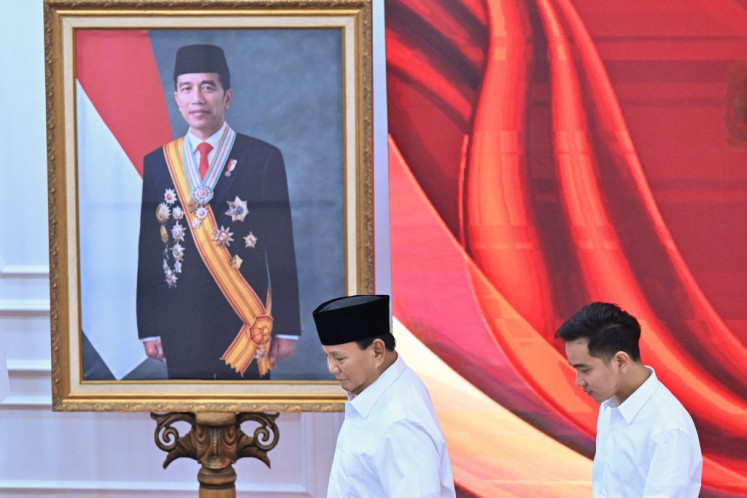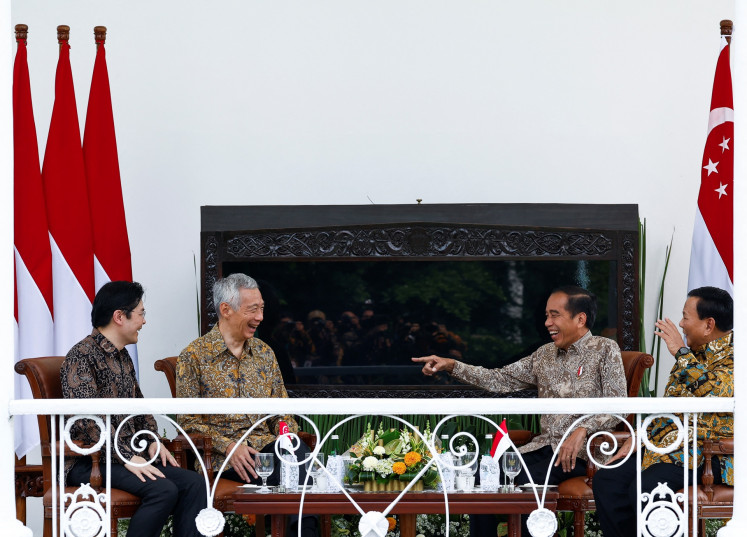Local content regulation for pharma not the panacea
Multiple global assessments and published reports have demonstrated that, while LCRs might deliver on specific policy goals in the short term, its damaging impacts evolve over time and outweigh short-term benefits.
Change Size
 Pharmaceutical products are arranged on a table. (Shutterstock/File)
Pharmaceutical products are arranged on a table. (Shutterstock/File)
T
he coronavirus pandemic has exposed once again Indonesia’s overreliance on imports of active pharmaceutical ingredients (API) to manufacture generic medicines. President Joko “Jokowi” Widodo has therefore called on the country to end its dependence on pharmaceutical supplies from abroad for 95 percent of locally produced drugs.
In response, the Industry Ministry is planning a new regulation on the local-content requirement (LCR) formula to determine the local procurement rate for pharmaceutical products. This planned regulation is based on Presidential Decree No. 6/2016 on the accelerated development of the pharmaceutical and medical equipment industry. If implemented, preference for public procurement in the pharma sector will be given to domestically produced drugs with at least 30 percent local content.
By issuing the LCR regulation for pharmaceuticals, the government is pursuing three objectives. First, attracting foreign firms that are willing to invest in API manufacturing. Second, boosting the domestic biopharmaceutical industrial capacity. Third, exploring the prospect that LCR may offer a promising path to improve research and development capabilities in the country.
But is the LCR really working? Just because its use across the globe has been growing since the Great Recession (2008-2009) doesn’t automatically mean it is effective in supporting targeted job creation or fostering domestic industries. Multiple global assessments and published reports have demonstrated that, while LCRs might deliver on specific policy goals in the short term, its damaging impacts evolve over time and outweigh short-term benefits.
Why is the LCR for pharmaceuticals not the answer to the lack of homegrown production of API in Indonesia? Here are some of the most obvious reasons:
In Indonesia, the policy is usually to give preference to domestic firms when it comes to government contracts awarding. In 2008, a new law called Decree 1010 stipulated that all pharmaceuticals registered in the country be locally produced, a unique case in the ASEAN region. This unwavering support led to domestic manufacturers enjoying a huge 75 percent market share.
Meanwhile, many decades-long multinational players found themselves operating below capacity and therefore decided to streamline their facilities or keep small packaging units to meet the requirements. Over a decade later, these “top-down” measures have neither boosted API domestic production nor catapulted foreign direct investment. Domestic companies, racing for profit, opted not to invest in raw material production and chose rather to rely on imports from China and to a lesser extent from India.
Decree 1010 offers a lesson that bears learning on how “yesterday’s solution can become today’s problem”. It shows how policy decisions in the health sector can sometimes be defeated by the system’s response to the policy itself. Decree 1010 may have helped the domestic industry achieve dominance, but it has also undermined the sector’s long-term competitiveness and laid bare its overdependence on raw material imports.
Implementing the LCR in this context can only add more ’localization barriers’, and will amount to doing the same thing repeatedly in the hope of having a different result, but in vain.
One of the great paradoxes of Indonesia’s pharmaceutical market is the low level of clinical research, high-tech job creation and foreign investment. This, despite the fact that the Indonesian market boasts some of the strongest (fueled by universal health insurance scheme, BPJS) growth rates in the region and is touted as Southeast Asia’s largest market in size and potential. Remarkably, neighboring Singapore, with its tiny size and population, has become a pharmaceutical hub, while Indonesia is struggling to attract high-quality FDI.
Government policymakers are well aware that the critical difference accounting for these disparities between the two markets are variances in policy and regulatory frameworks. Therefore, it is important for them to take stock of the sector’s current situation, identify the opportunities and challenges and assess the government’s potential leverage with investors. For the LCR, there is no one-size-fits-all policy.
While investment and industrial policies are naturally directed toward economic objectives, drug regulations are geared primarily toward protecting and improving public health. Indonesia’s pharmaceutical sector is not comparable to oil and gas, electronics, machinery or equipment. More coercion with the LCR will further undermine the attractiveness of a market that is inherently not a market of choice for research-based pharmaceutical investors.
API production is a truly global business. Medicines prescribed around the world likely contain an active ingredient made overseas. Take the US and the EU: 80 percent of their raw materials are imported from China and India. Even India, “the pharmacy of the world”, due to its leading role in the export of finished products, imports more than 70 percent of its APIs from China. Price and regulatory compliance are the most critical factors shaping ever-shifting API supply chains and drug industry global demand.
Suppliers use different tactics to capture market share. Asian players concentrate on low cost, high volume production, while their EU counterparts focus on more specialised, often highly potent APIs. These dynamics have allowed China to build a formidable API manufacturing arsenal. In the past 20 years, China built a huge and incomparable scale, becoming the “factory of the world”. As a result, many European and even Indian companies exited the API business.
So how could the LCR policy help relocate generic API manufacturing to Indonesia without causing a surge in prices? How can domestic manufacturers gain more independence when they are already complaining that low BPJS prices could become unsustainable?
The COVID-19 outbreak has exposed vulnerabilities in the global medicine supply chain of essential drugs. In fact, it is the generics — the cheaper equivalents to off-patent originals, which represent 95 percent of WHO's essential medicines— that are in jeopardy. Given the above characteristics of Indonesia’s pharmaceutical market and the government’s pursuit of local production as part of an industrial policy, they likely need to focus on attracting generic manufacturers rather than the big R&D-based pharmaceutical companies. This entails two major moves: first, a drastic change of trajectory from previous protectionist policies aimed at keeping at bay Chinese and Indian firms, and second, a concerted strategy to identify which medicines should be produced locally by newcomers versus local firms, taking into account the public health perspective and sustainability.
Investment in API will not come on its own, even less so if the LCR is implemented; concerted efforts led by the government will be necessary for Indonesia to attract the right foreign direct investment and technology transfer.
***
The writer is public health physician and president director of PT Roche Indonesia. The views expressed are his own.









